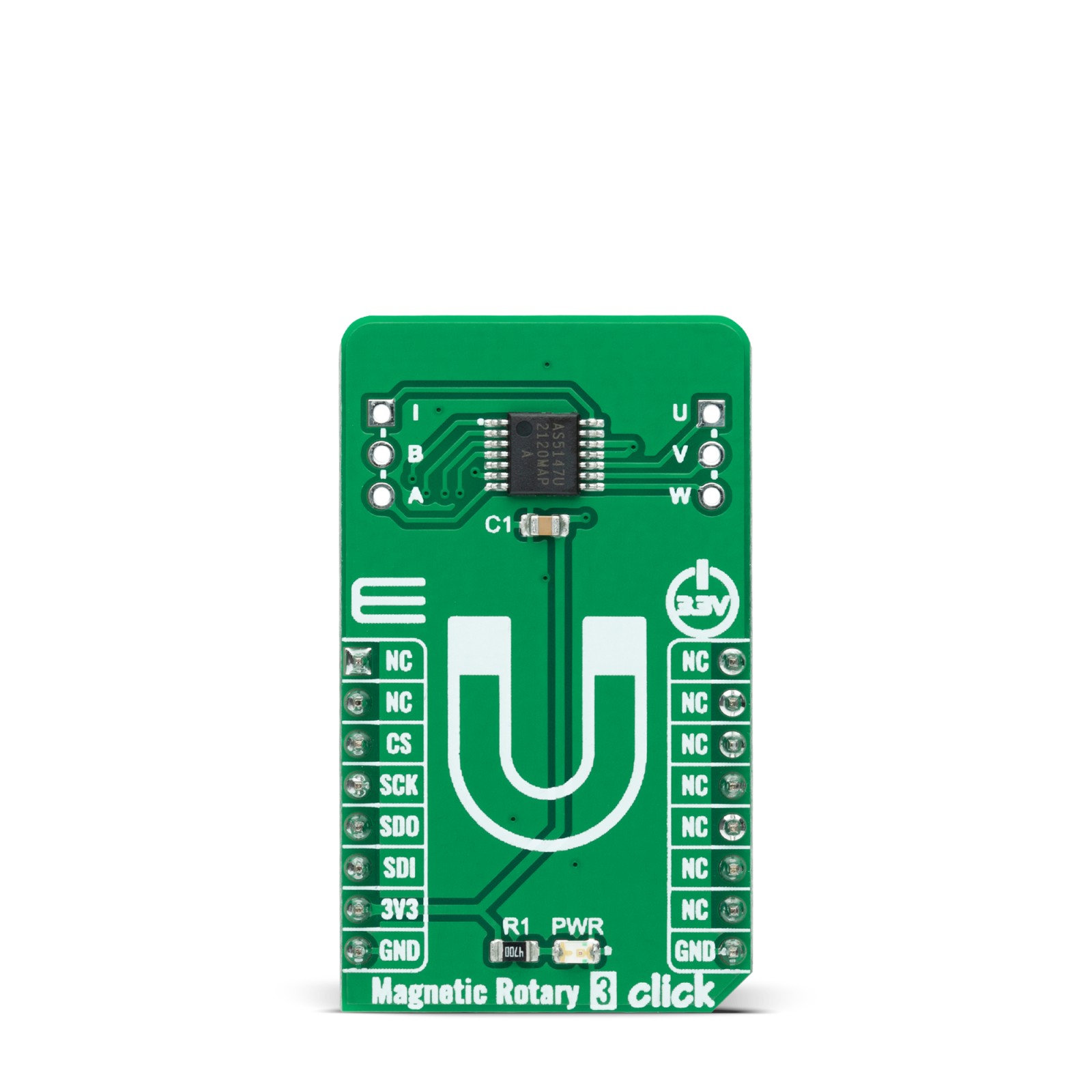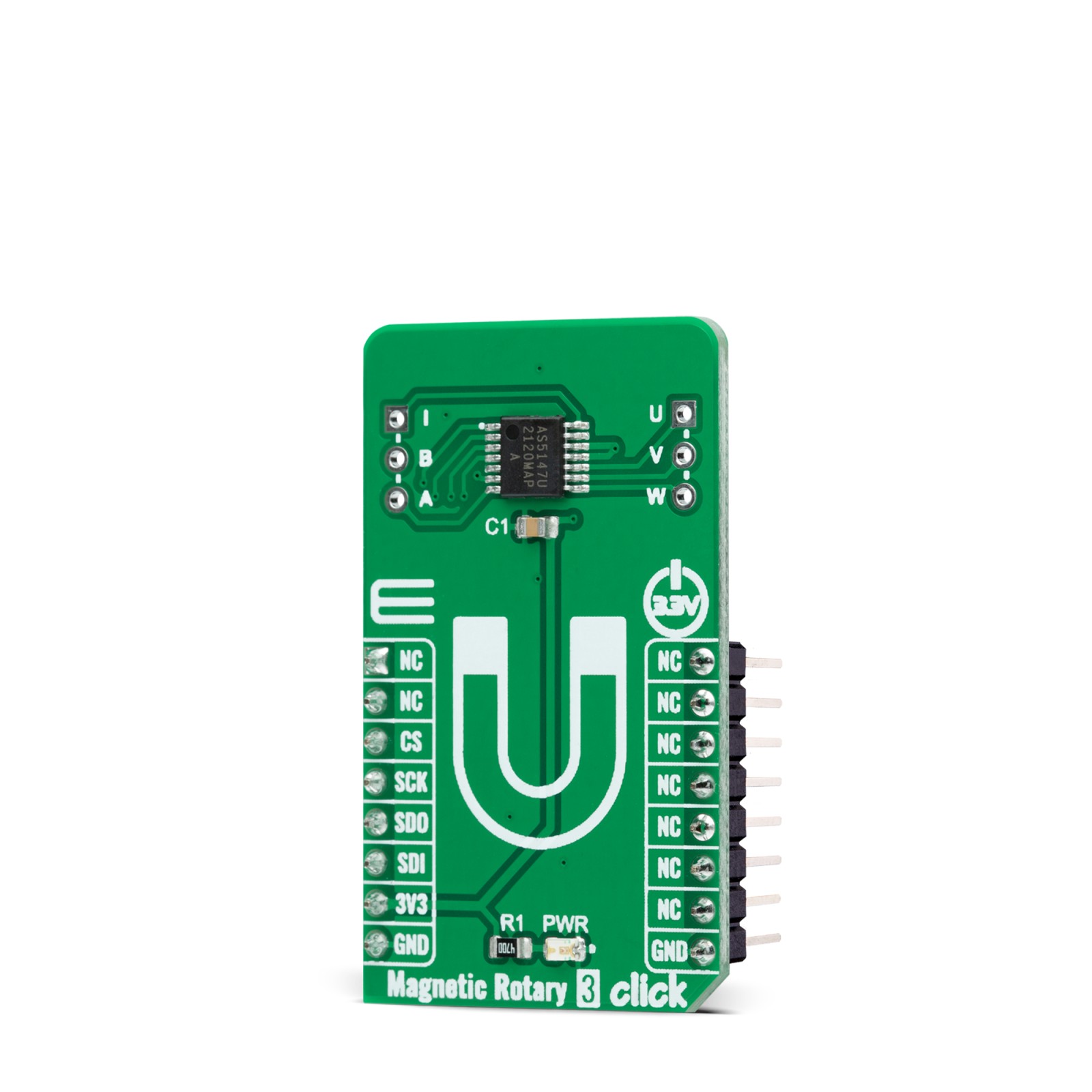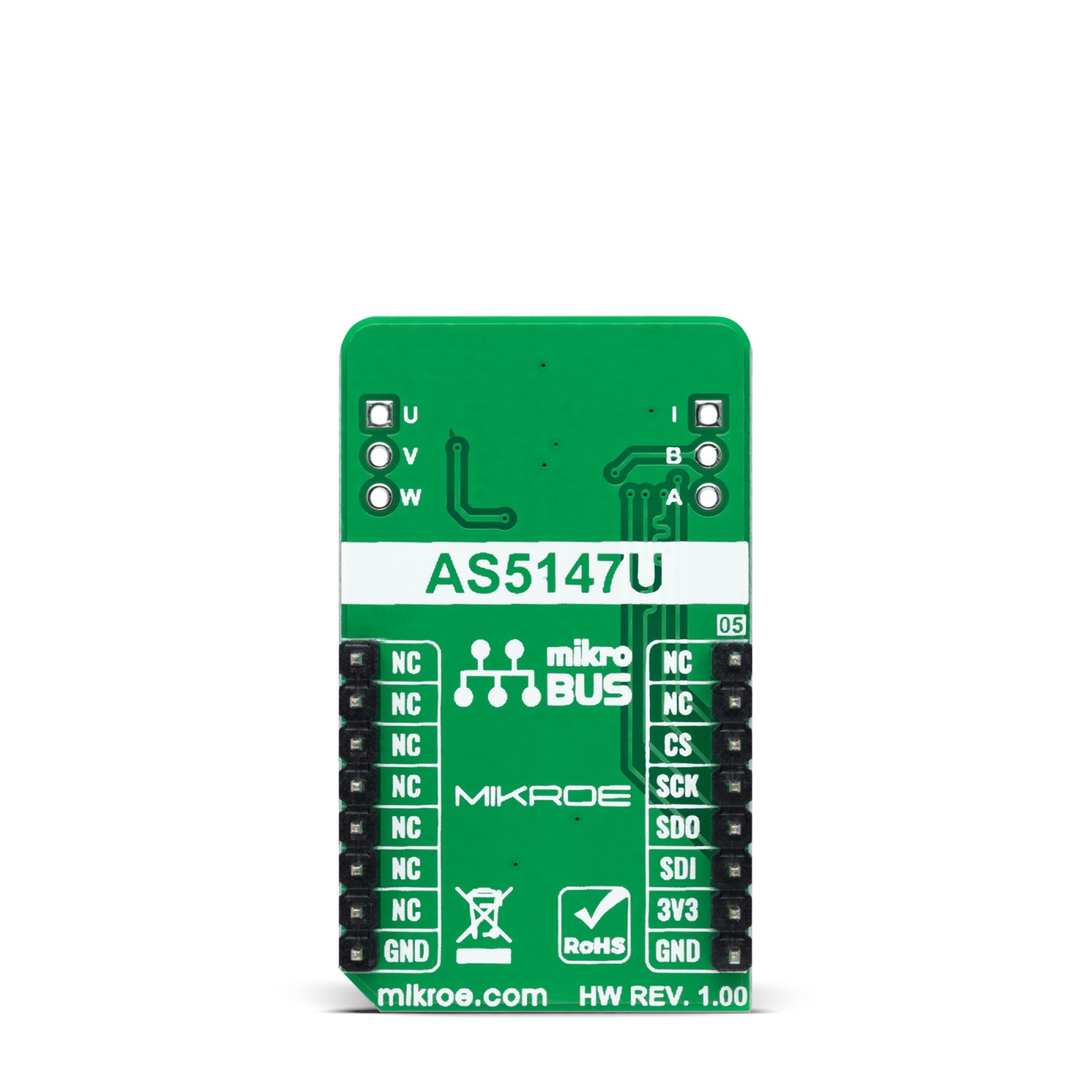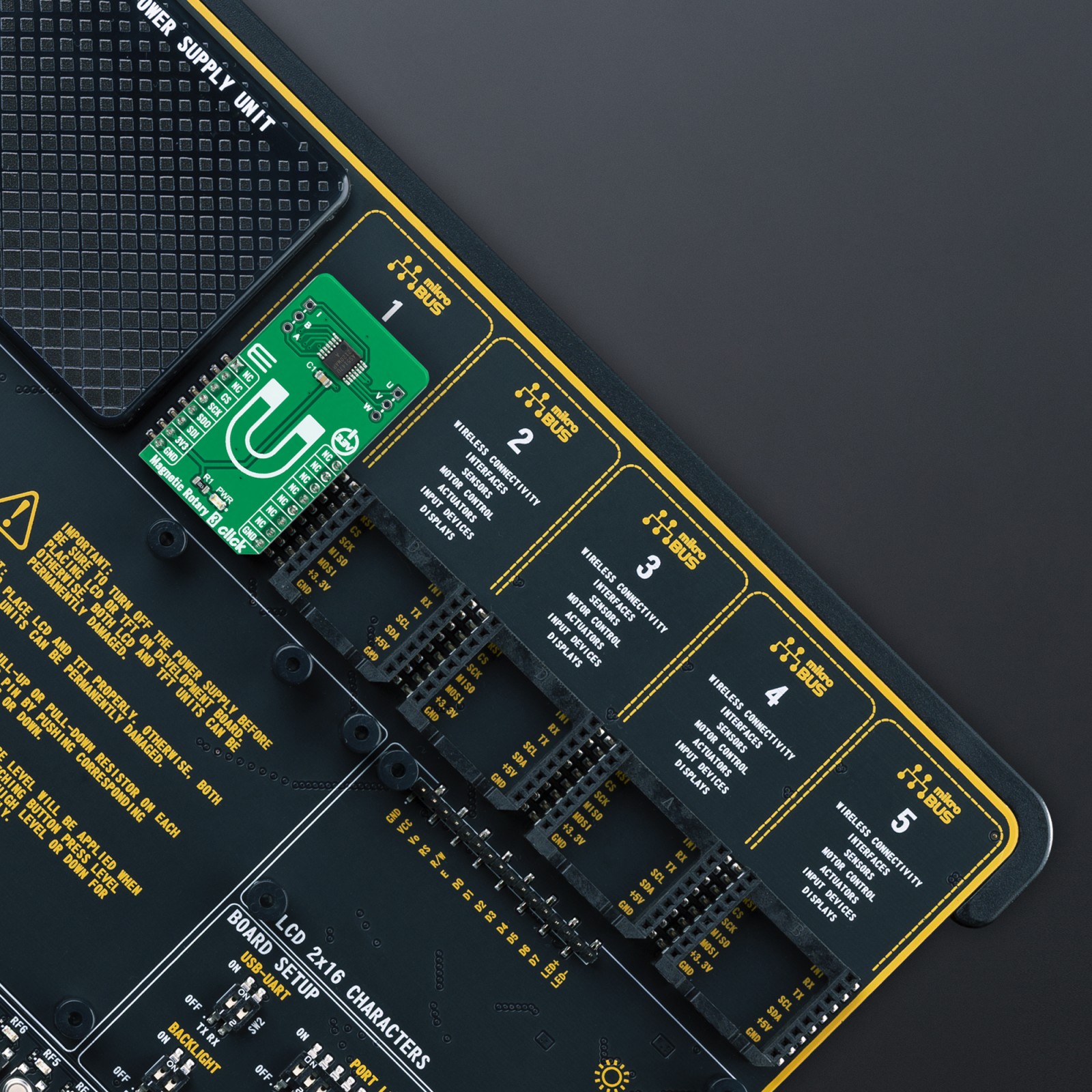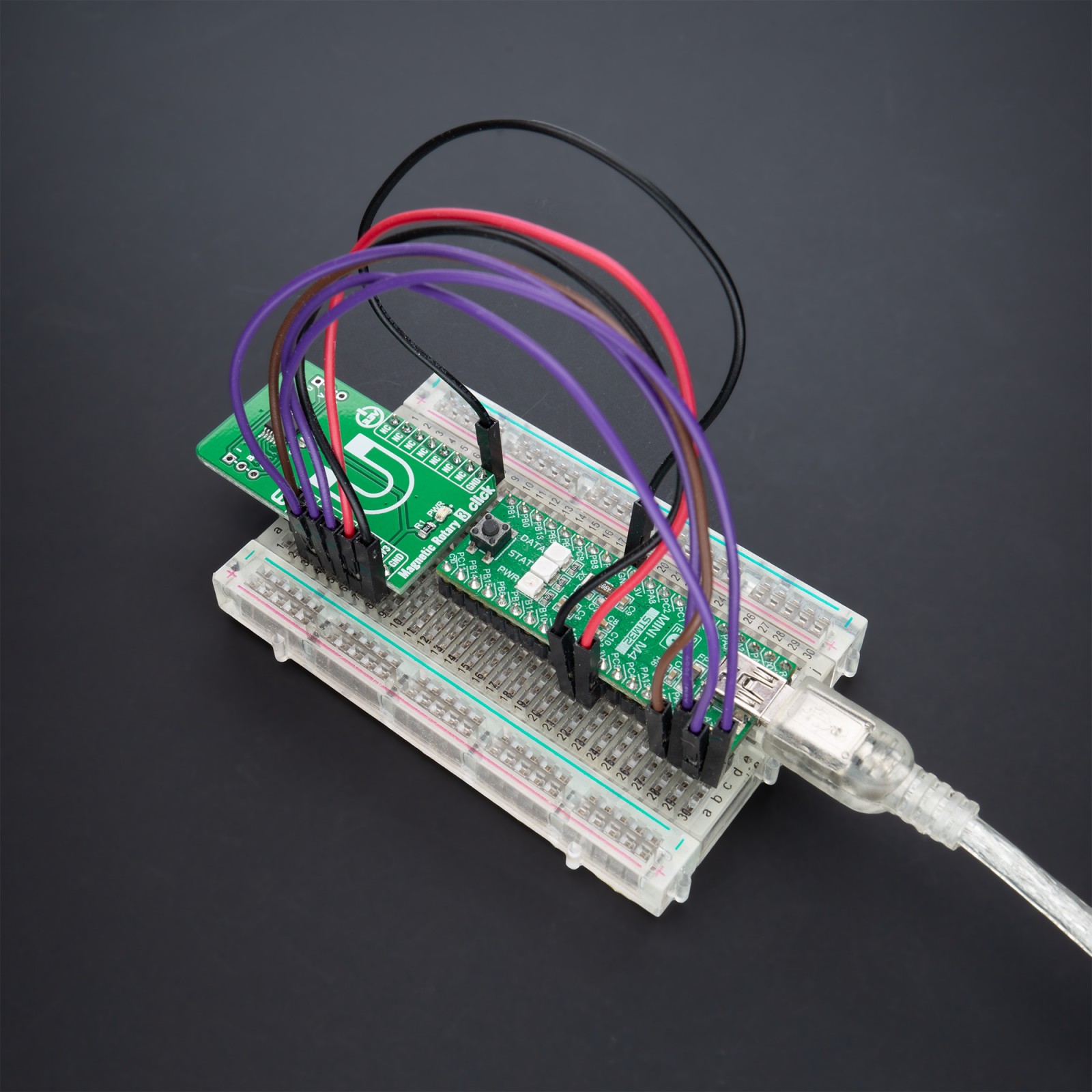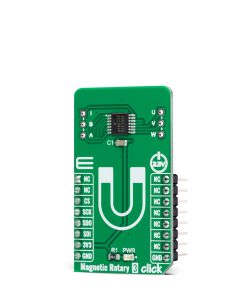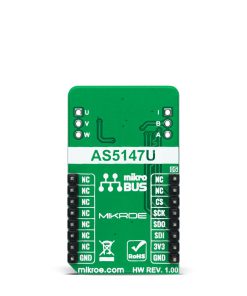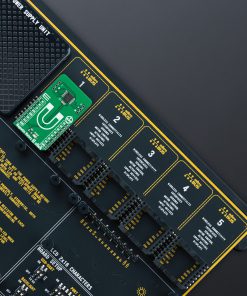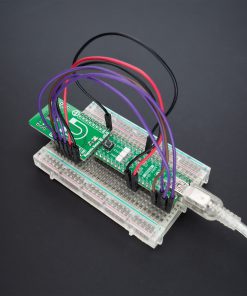Subtotal: R3,690.00
Magnetic Rotary 3 Click
R575.00 ex. VAT
Magnetic Rotary 3 Click is a compact add-on board for accurate magnet-position sensing. This board features the AS5147U, an SPI-configurable high-resolution rotary position sensor for fast absolute angle measurement over a full 360-degree range from ams AG. The AS5147U position sensor suppresses the influence of any homogenous external stray magnetic field, equipped with a revolutionary integrated dynamic angle error compensation (DAEC™) with almost zero latency. It also comes with onboard headers reserved for incremental and commutation signals of their respective A/B/I and U/V/W signals alongside embedded self-diagnostics, including magnetic field strength too high, magnetic field strength too low or lost magnet, and other related diagnostic features. This Click board™ has been designed to support BLDC motor commutation for the most challenging automotive applications.
Magnetic Rotary 3 Click is supported by a mikroSDK compliant library, which includes functions that simplify software development. This Click board™ comes as a fully tested product, ready to be used on a system equipped with the mikroBUS™ socket.
Stock: Lead-time applicable.
| 5+ | R546.25 |
| 10+ | R517.50 |
| 15+ | R488.75 |
| 20+ | R470.35 |

 GPS Click
GPS Click  3D Motion Click
3D Motion Click  ADC Click
ADC Click 